
| PHOTO ARCHIVE | |
| Bike Photos | |
| Gas Tank Photos | |
| R75-KS750 Photos | |
| BMW LITERATURE | |
| Sales Brochures | |
| Parts Manuals | |
| Repair Manuals | |
| Service Bulletins | |
| Road Tests | |
| Other Literature | |
| PARTS & BIKES | |
| For Sale | |
| Wanted | |
| GENERAL | |
| Terms, etc. | |
| About Me | |
| EMAIL ME | |
| John Lacko | |
| HOME | |
| Go to Home Page | |





In 1955 BMW changed the case casting once again and moved the serial number location to the right (driveshaft) side of the case, but still up above the push rod tubes. All R50 and R69 bikes had the serial number in this location, along with the 1955-only R67/3 plunger bikes - which were still being produced. This engine case is from an R50S.
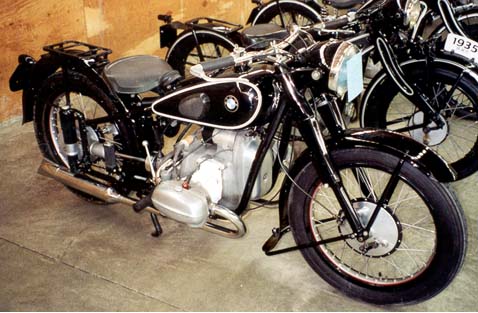
Here's a real nice R66 that came to the BMW national in Rhinebeck NY.
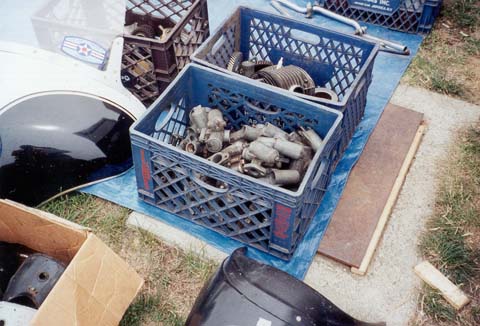
There's Gold in them thar bins... For almost four years I've been looking for a set of one year only carbs for my best friend's 1950 R51/2. I'd visited this particular vendor several times, but on my last pass I started digging through this bin of carb bodies. I picked each one up, read the number, and placed it outside the box. About half way through I found one that was marked 1/22/30.... Yikes! It was in fine shape too. I carefully set it in the next bin, and kept on searching. Before I hit the bottom of the bin I had found its mate, 1/22/29. After putting all the other carb bodies back in the bin I purchased the two carbs and went on my way. I think my pulse finally slowed down about a half hour later! An aluminum Heinrich fairing sits to the left of the bin.
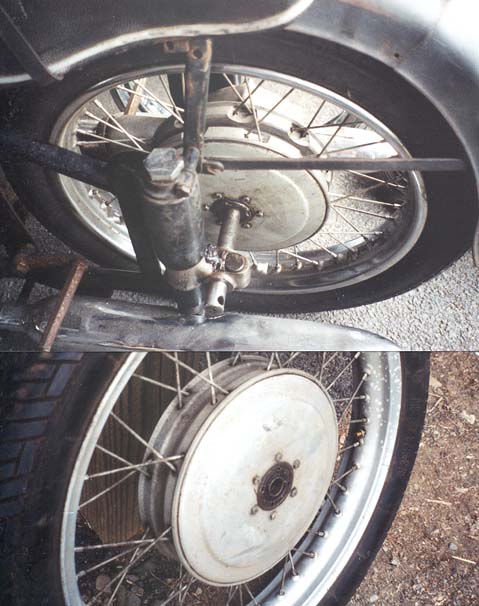
One of the things that I enjoy so much about old BMWs is that there's always something new to discover. I was looking over a 1955 R67/3 at the Rhinebeck show, and noticed that the hubs were a little different then any others I'd ever seen before. The top photo is a picture of that hub, with the one just below it of the full width hub that was introduced in late 1953 and the one that I've always been familiar with. It would seem that in addition to the new hubs that were developed for the 1955 R50 & R69 twins, the 1955 R67/3 also got a special hub of its own.

This photo was taken at a roadside restaurant back in the late 1970s in Germany , and shows a nice looking 1932 R11. Mounted on the bike is a post-war Steib S500 or S501.
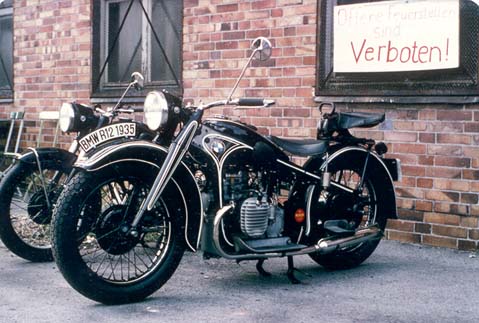
Taken at the same rest stop as the photo above was this shot of a first year R12. This R12 is the dual carb sport model. Something about the front fender just doesn't look right to me - but it could just be the way the stripes were applied, or the glare off the paint. Behind the R12 is an R25/2.

The BMW world is a small world indeed... This photo, taken in the late 1970's in Germany, is of an unrestored R2. This machine was confiscated by the German government during the war and saw service in the army. Traces of the old tan paint can still be seen on the front stand. Just after this photo was taken, the bike was sold to someone in the USA, where it spent the next 17 years, until my friend Denis bought it in 1995. I had it at my house over one winter, sorting out all its electrical problems and making up some new cables. Denis cleaned up the last traces of tan paint, and the bike remains one of the nicer unrestored examples around.
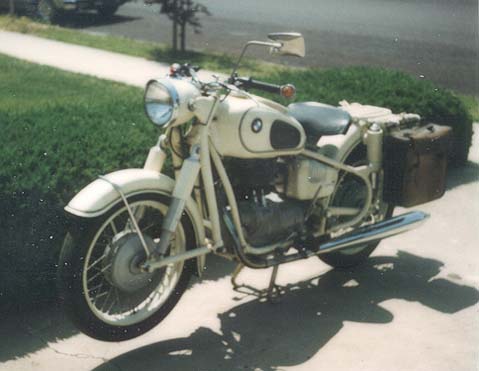
Not often seen in the States are examples of bikes that BMW produced for the Red Cross. Note the painted rims and police saddlebags w/brackets.

Looking a little forlorn with it's dull paint and missing parts, this R42 was found for sale in Belgium in the late 1970s. I'd love to have a chance to acquire this machine today!

To the left of the R42 shot above was this barn full of bikes. At the end of the line is a military R12. The front fender has been cut back, the riders seat is from an R25, and a passenger foot board serves as the rider foot board - but I've seen (and owned) worse.



